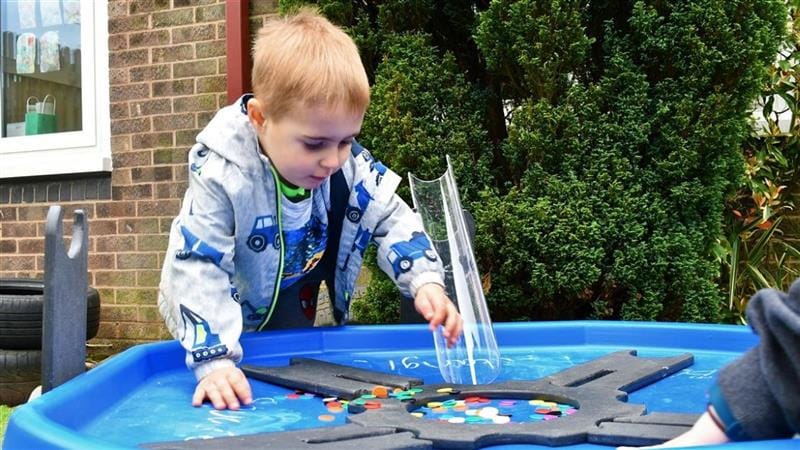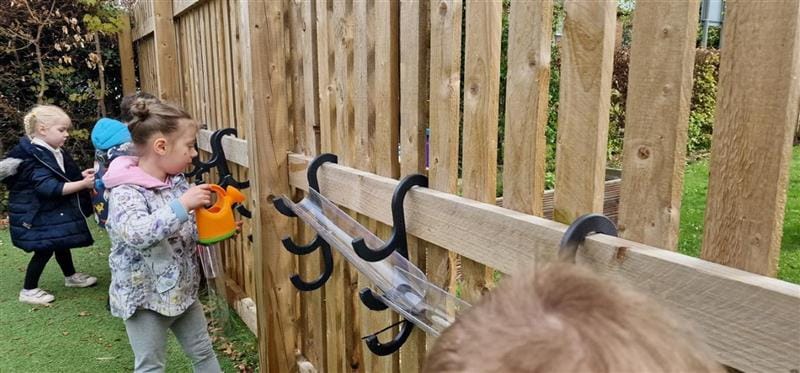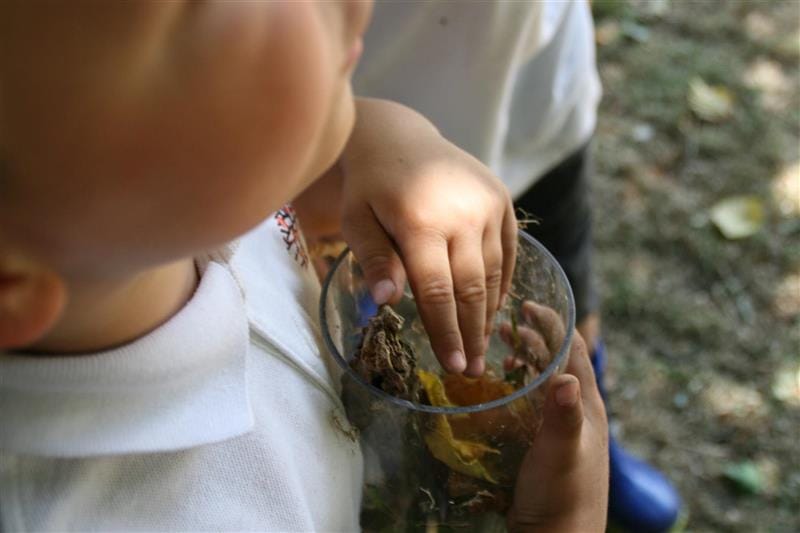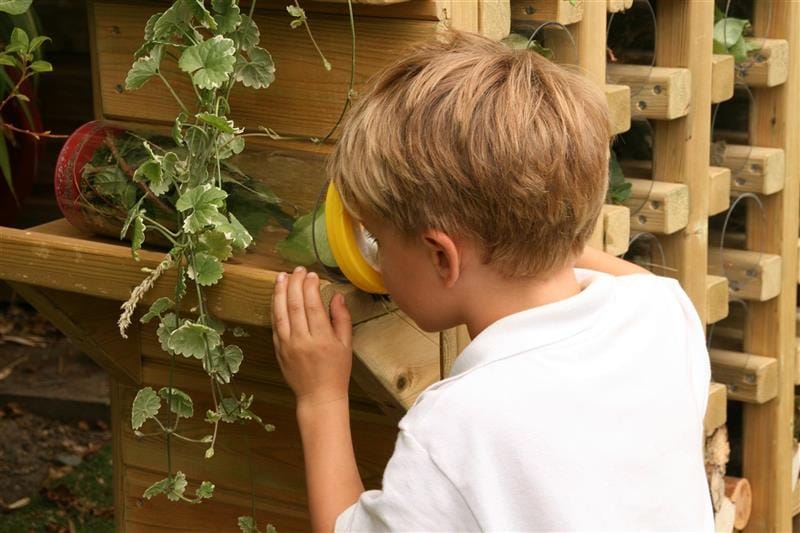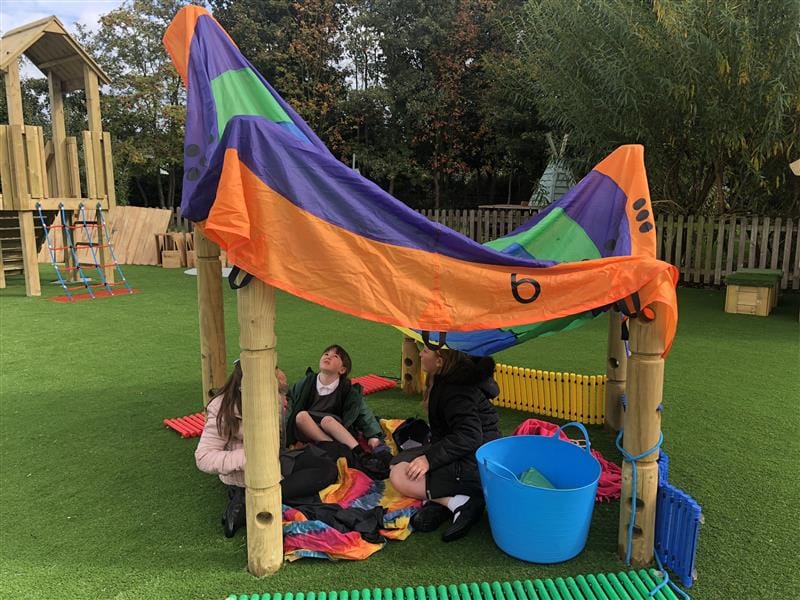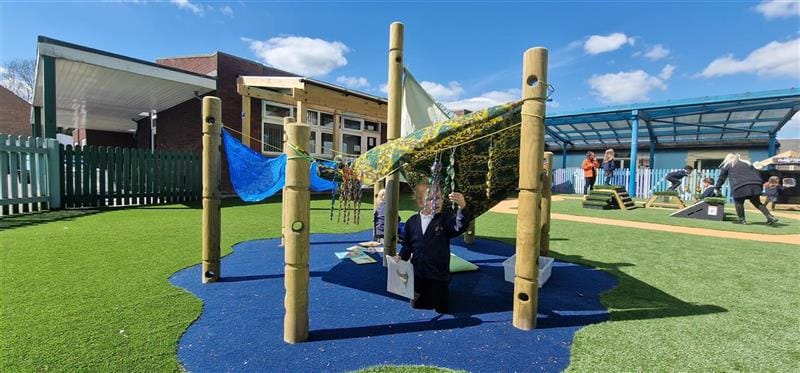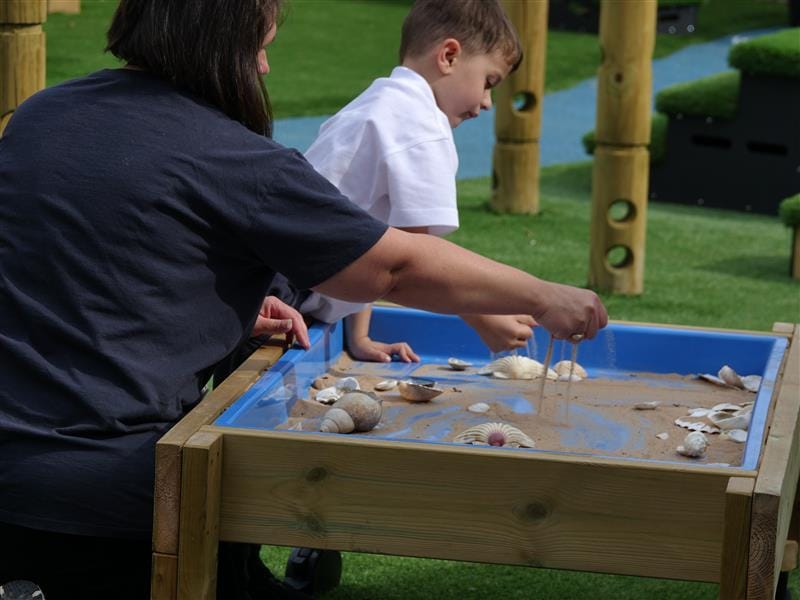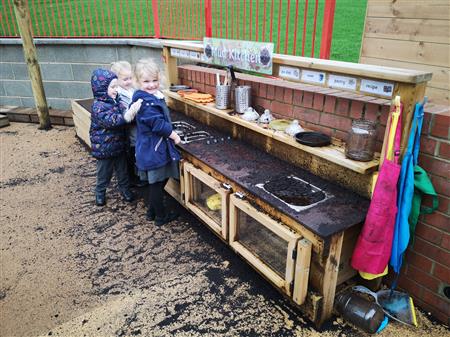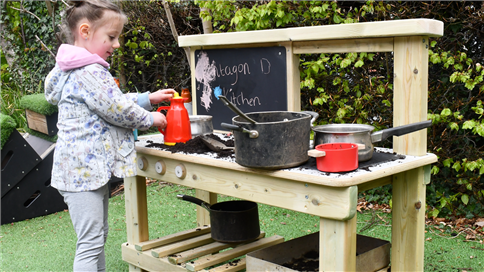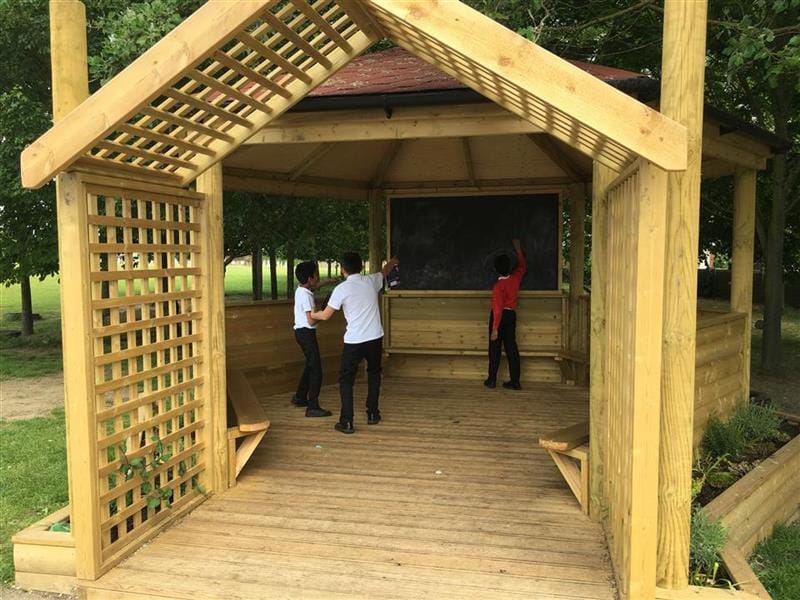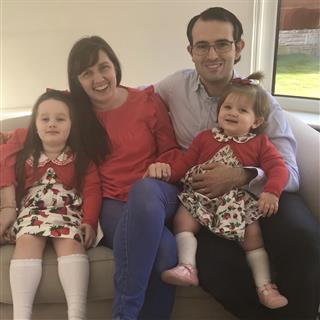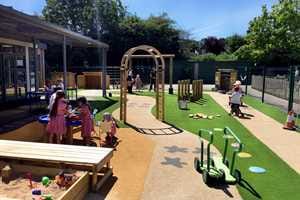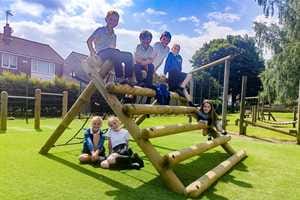
Lesson Ideas and Activities
How to Integrate Outdoor Play with Mathematics to Explore Shapes!
Mathematics introduces children to concepts, skills and reasoning strategies that are essential in everyday life.
Children begin to make sense of the numbers, patterns and shapes they see in the world around them.
Pupils are problem solvers; they love an unexpected discovery and possess an ability to form connections.
As confidence grows children look for patterns, they use logical reasoning, suggest solutions and try out different approaches.
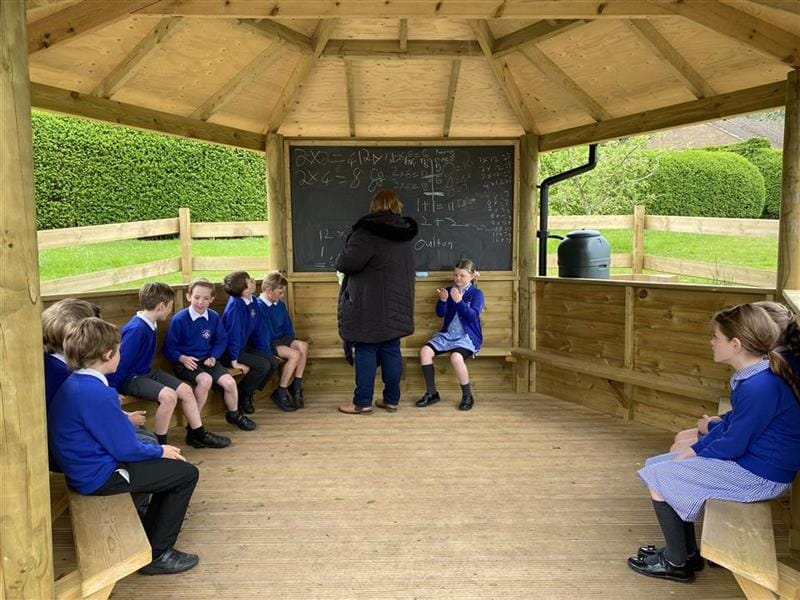
Mathematics provides children with a new way of communicating using symbols, diagrams and spoken and written language.
High-quality mathematics education stimulates curiosity, fosters creativity and gives children a real sense of enjoyment.
The importance of shape, space and measures
As a primary school teacher, I have found that teaching measurement and geometry has its difficulties.
Those pupils who may excel when studying numbers can sometimes find visualisation of shapes, estimation and comparing measurements quite difficult.
Sometimes I feel ‘Shape, space and measures’ seems to get less attention as a result of a focus on number sense.
Research has shown that by improving young children’s spatial skills we can improve overall mathematical achievement.
Developing a general ability to visualise spatially helps children to visualise numbers spatially for example, using a number line.
A focus on shape and space may provide a more accessible route to mathematics for some children, rather than focussing on mainly numbers.
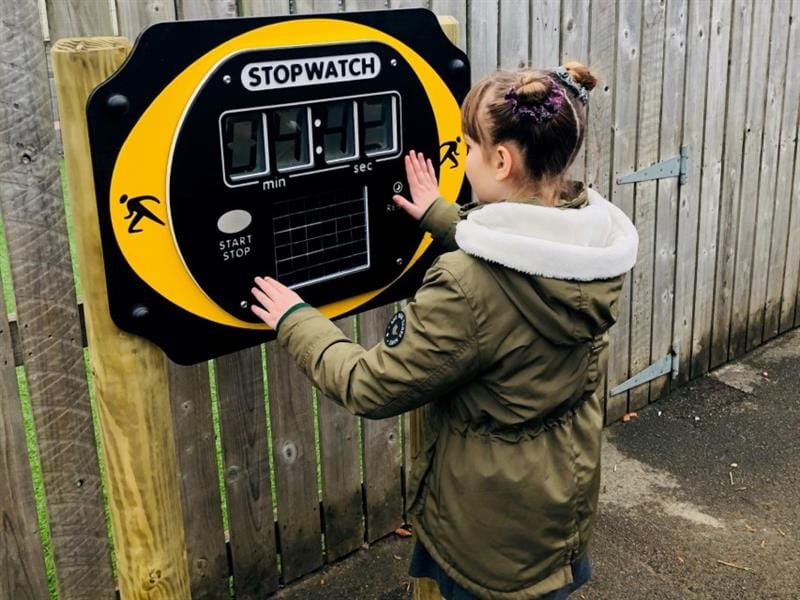
Careers in STEM
Studies have shown that children who have higher spatial abilities achieve better in subjects such as mathematics and science at school.
These children are more likely to enter careers in STEM.
Children who are not naturally predisposed to these abilities could struggle in these subjects.
Using spatial language in everyday interactions and asking children to make matching models during construction play can begin to enhance children’s skills.
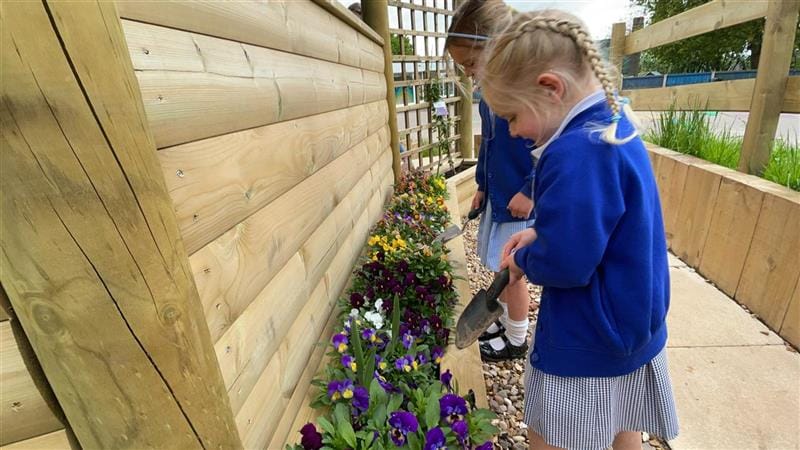
When the government produced a draft copy of the new early learning goals in 2018 it chose to omit the ‘shape, space and measures’ target as well as any mention of problem solving and reasoning.
The decision was met with criticism from DfE advisors. The DfE has since decided that there is a need to, “include greater detail on the importance of shapes, spatial reasoning and measure as part of early maths learning.”

Mathematics in our daily lives
Many everyday transactions and real-life problems require competence and confidence when measuring, manipulating shapes, organising space and recording and interpreting numerical and graphical data therefore it is essential that children understand these concepts.
I have found that when children struggle to grasp shape or measure, it is always necessary to turn to practical methods and apparatus.
I believe that supporting children’s maths learning outdoors means offering them mathematical opportunities to explore shapes, patterns and sequences.
This blog will explore outdoor shape activities for eyfs.
5 Activities to Develop a Natural Interest in Numbers
Developing children’s mathematical skills does not need to rely on indoor paper-based activities.
Children need to view themselves as mathematicians and develop a natural interest in numbers, measuring and shapes in the world around them.
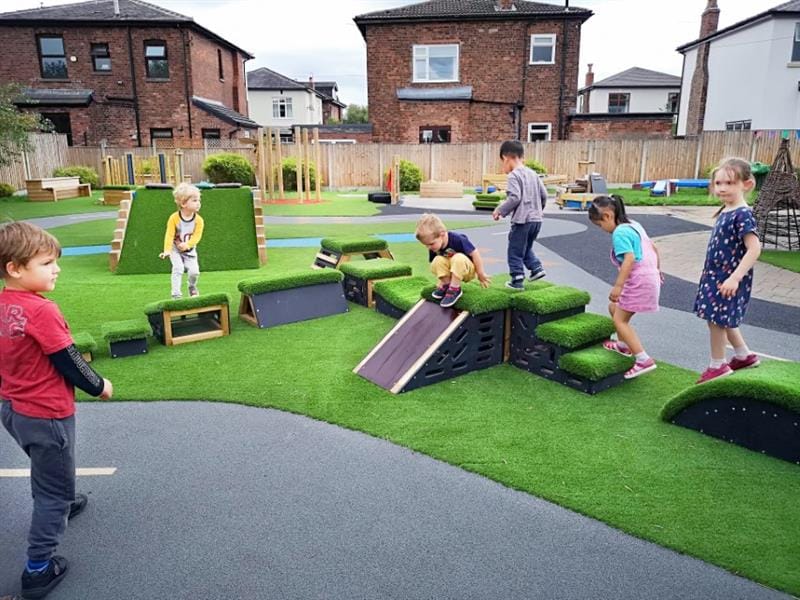
A wealth of natural resources for outdoor mathematics
Our Outdoor Classroom provides us with a wealth of natural resources. Twigs, stones, leaves, flowers and conkers are the perfect objects for children to begin to sort and make patterns with.
When discussing similarities and differences mathematical language such as longer/shorter, heavy/light is naturally used.

Pictures and shapes can be made using objects for example can we make two different triangles using these sticks?
Leaves are a brilliant, free resource that are readily available all year round.
Learners can order leaves by size, measure how many leaves are needed to get to a certain point and sort leaves by colour and type.
Going on a shape hunt using view finders allows children to apply their understanding.
They will begin to use the mathematical names for shapes and through observation discuss the properties of shapes.
Using cameras and making books about shapes in the outdoor environment allows children to recognise similarities and orientation.
Outdoor spaces are full of interesting patterns children can spot them in the local environment and discuss the number of sides and lines of symmetry.
Creating their own trail can be a fun activity for pupils. Using materials such as chalk and sticks involves children in deciding which way they should go and they will begin to use positional language.
Picture books such as ‘We’re Going on a Bear Hunt by Michael Rosen can act as a starting point to stimulate further discussion about position and direction.
Busy Builders
Young children love making and building things. I’ve been presented with numerous models over the years and it’s fascinating to watch children become so enthused when playing with bricks, tiles and blocks.
In the outdoor environment construction play can take on a much larger scale.
Building caves and dens from boxes and material allows children to explore 3D Shape Activities.
Cardboard boxes could be taken apart to explore 3D models and pupils can see how they have been constructed using 2D shapes.
Children often answer their own questions when making their models such as how tall? How long? How wide? Pupils begin to estimate and measure, make predictions and record their results.
Practitioners can provide children with materials and set them challenges such as can you make a framework that we can grow vegetables on? Can you make a house that the wolf won’t be able to blow down? Can you use the crates to make a den for the teddies?
I remember a successful lesson when teaching shape with a key stage 2 class outside. I split the children into teams and provided them with a circle of string.
Working together, everyone had to hold and manipulate the string to change the way it looked.
Various shapes were made and children discussed the terms regular/ irregular and reasoned about sides and angles.
I have also observed children using 1-m sticks to create large 3D shapes which allow children to understand nets and scale.
Mud and Water Play
Mud kitchens and water tables are ideal places for potion making. Children will be able to follow recipes and devise their own.
Pupils in KS2 will enjoy pouring different coloured water into different shaped containers and seeing how it adapts.
Practitioners could ask questions such as: Can you fill this spherical container? Does that same amount fill a cubed container?
Younger children will be able to compare measurements and use terms such as full, half full and empty.
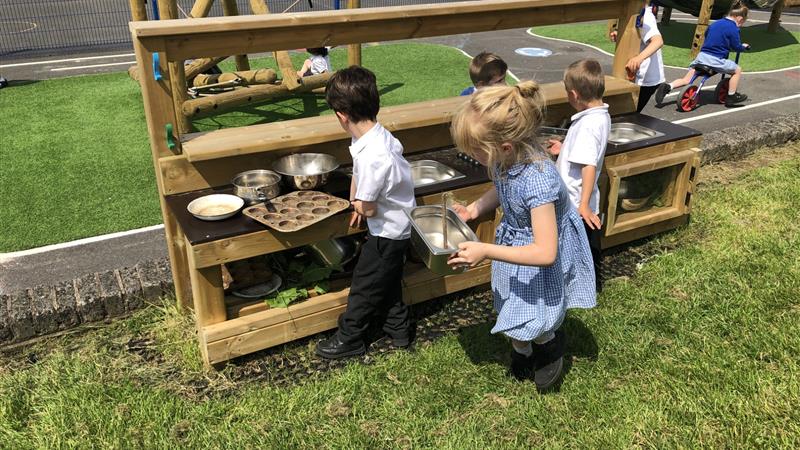
Socks and rubber gloves might seem like a strange addition to mud kitchens or sand boxes but they can be a useful stimulus to develop mathematical language and understanding.
As the socks and gloves are filled up, they change in length and weight, inviting the use of vocabulary such as long, longer, longest, short, shorter, shortest and more and less.
Children can talk about which sock is the heaviest and discuss ways of making it heavier. Coloured spaghetti in the mud kitchen offers a tactile opportunity for play and exploration.
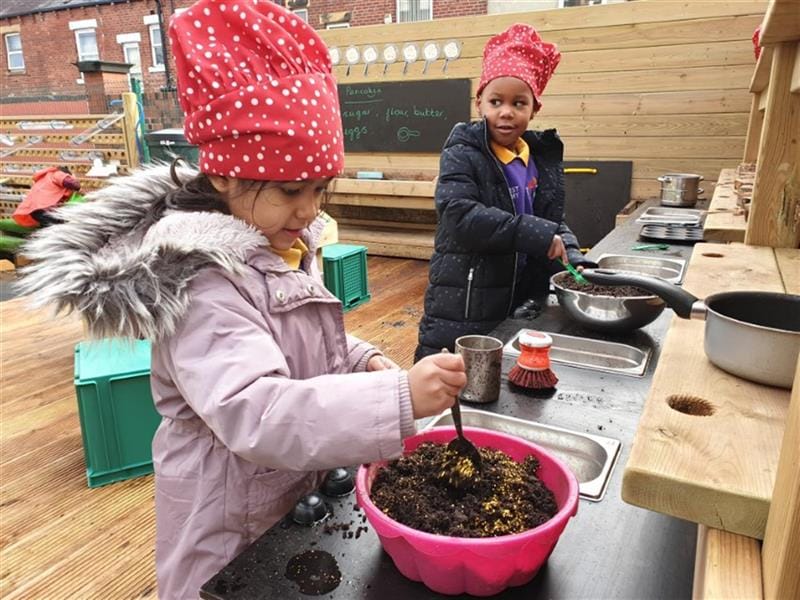
Children will enjoy finding the longest and shortest strands of spaghetti, as well as contorting them into different shapes. Adding scissors is a great way to practise motor skills and children will be able to compare strands.
Rainfall can be measured using a rain gauge. Pupils can suggest the most appropriate unit of measurement and record results daily. Totals can be calculated and graphs can be devised.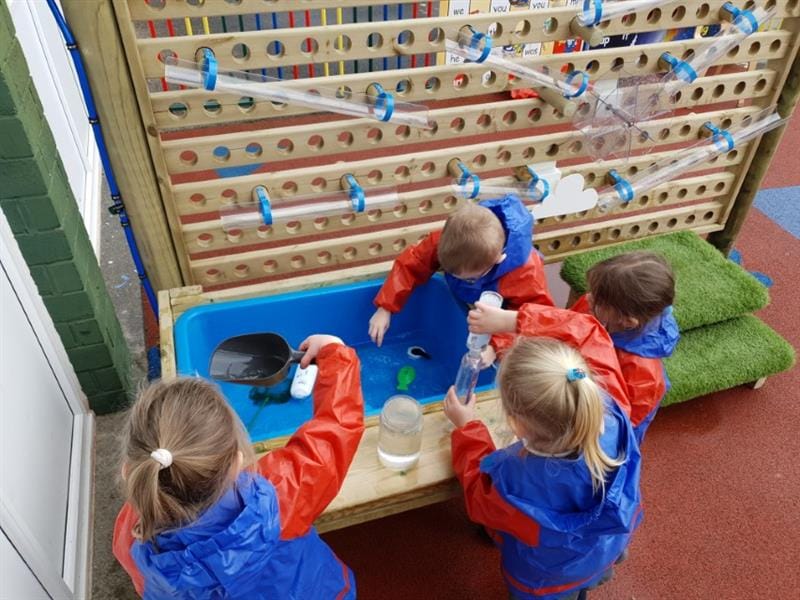
Weighing and Measuring
Weighing scales are really useful for comparing the weights of different objects.
Children could be asked to find the heaviest object they can or how many small pebbles equal the weight of their rock?
Product Spotlight
Having a sunflower growing competition is a great way for all children to measure and record results over time.
Children can measure how far they can jump.
Who jumps the furthest and by how much? They could calculate the difference between two of their jumps and find out who improved the most.
Children in year 6 can find circular objects to measure outside such as flower pots and tree stumps.
They can measure the circumference, radius and diameter and then investigate the relationship between diameter and radius.
Making geometry fun
Playground battleships is a really useful way to recap finding co-ordinates on a one quadrant grid.
A grid can be drawn using chalk and natural objects can indicate where ships have been hit.
Having an outdoor classroom space can be really useful when beginning to teach perimeter as you can tape large shapes directly onto the floor which children can measure and then calculate.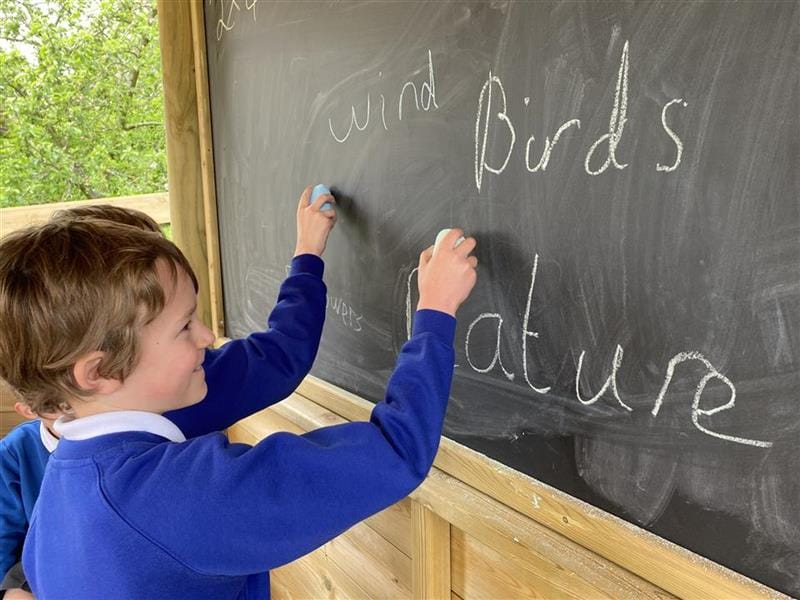 When children can work with others in the outdoor environment, they will plan, share, discuss and explore mathematical ideas.
When children can work with others in the outdoor environment, they will plan, share, discuss and explore mathematical ideas.
Using different materials enables children to develop problem-solving skills, pose questions and use mathematical language where no specific answer or result is expected.
Another great idea is to use a Play Builder set and challenge your children to create the most shapes that they can within an obstacle course. Children will have to think as they visualise the possible combinations they can create with the planks and blocks.
Not only will this improve a child's cognitive ability, but it will also create a situation where children can physically interact with their creation and have fun with it, making the lesson even more memorable!
Allowing children to explore activities in the natural environment and setting them challenges helps them to experiment and deepen their understanding of shape, space and measures.
Pupils are able to build their self-confidence in an area of maths where practical exploration is vital.

